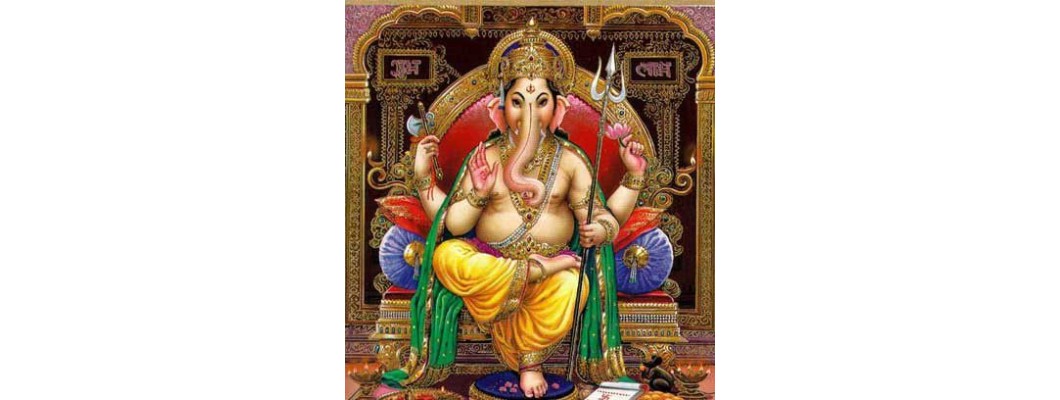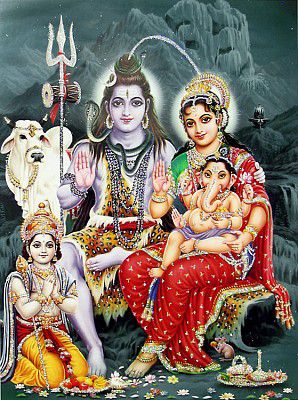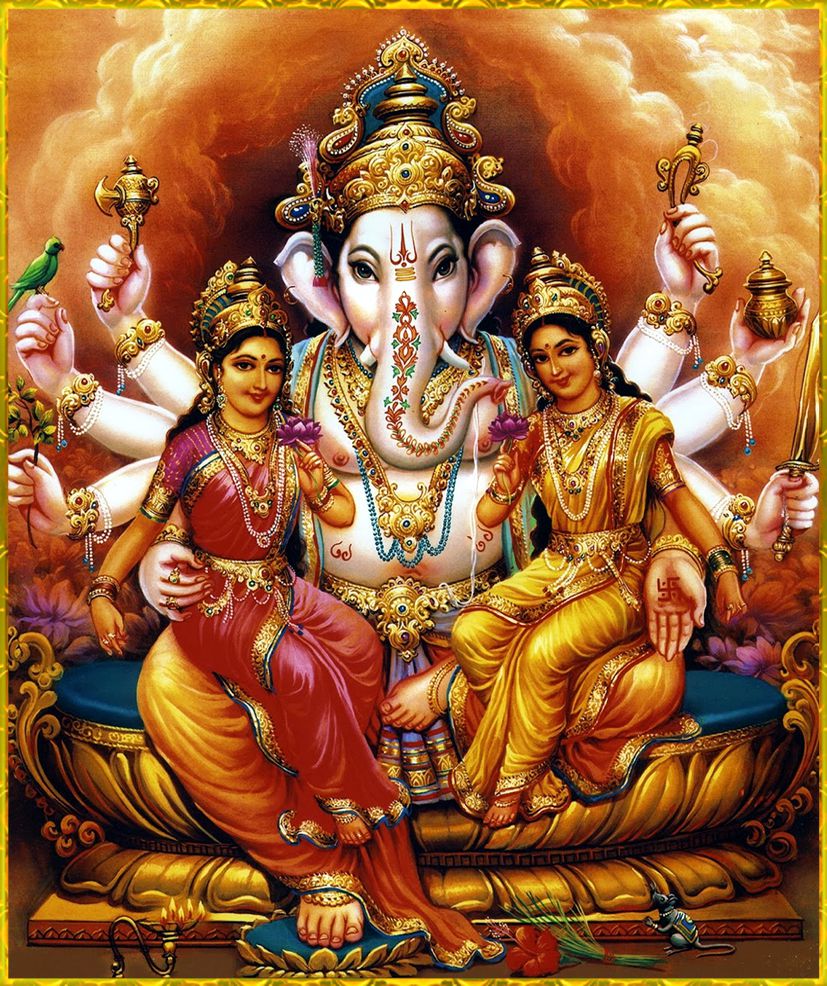15 Sep



Lord Ganesha is one of the best known and the most worshipped deity by Hindus across the world. He also known as Ganapati and Vinayaka.
Story of Lord Ganesha
One day, Goddess Parvati, the wife of Lord Shiva, was getting ready for her bath and needed someone to guard her chamber.
Therefore she made a beautiful, young boy from the sandalwood from her body. She gave him life by sprinkling the Holy Ganges water on him and entrusted him with guarding the door.
While she was away, Lord Shiva returned and was surprised to find a little boy standing at the entrance to his wife’s chamber. When he tried to enter, the boy blocked his path.
“Who are you and why are you blocking my path?" demanded Lord Shiva.
“No one enters my mother’s chamber", declared the boy boldly.
Taken aback, Lord Shiva replied, “Step away; I have the right to enter my wife’s chamber." But the young and courageous boy did not move but stood his ground.
Not knowing that this was his own son, Lord Shiva who was quick to anger grew enraged. Not used to be disobeyed he cut off the boy’s head.
Goddess Parvati on returning from her bath saw her son lying dead and was overcome with grief. She was filled with both anger and sorrow.
Seeing this Lord Shiva sent his soldiers to fetch the head of the first beast that they saw. The men rushed and finally came upon an elephant. They immediately took the head to Lord Shiva, who quickly attached it onto the body of the slain boy and gave him life once again.
To further appease his grief-stricken wife he promised that her son would be worshipped first, before all other Gods.
Even today at the entrance of all temples one would find the idol of the elephant headed God, Lord Ganesha.
Lord Ganesha's Family
 Lord Ganesha is the son of Lord Shiva and Goddess Parvati and the brother of Lord Kartikeya.
Lord Ganesha is the son of Lord Shiva and Goddess Parvati and the brother of Lord Kartikeya.He has two wives namely Riddhi and Siddhi.
Lord Ganesha has two sons who were named as Shubh and Labh. Shubh and Labh are personification of auspiciousness and profit respectively. Shubh was the son of Goddess Riddhi and Labh was the son of Goddess Siddhi. Goddess Santoshi Maa is daughter of Lord Ganesha.
Significance of Lord Ganesha's Form
Lord Ganesha has an elephantine countenance with a curved trunk and big ears, and a huge pot bellied body of a human being.
Ganesha's head symbolizes the Atman or the soul, which is the ultimate supreme reality of human existence, and his human body signifies Maya or the earthly existence of human beings. The elephant head also symbolizes intelligence, wisdom and strength of mind one must possess to tackle the problems arising in life. The trunk of Lord Ganesha represents Om, the sound symbol of cosmic reality. It also represents the adaptability and efficiency one should possess to handle all worldly problems.
In his upper right hand Ganesha holds a goad, which helps him propel mankind forward on the eternal path and remove obstacles from the way. The noose in Ganesha's left hand is a gentle implement to capture all difficulties.
The broken tusk that Ganesha holds like a pen in his lower right hand is a symbol of sacrifice, which he broke for writing the Mahabharata. The rosary in his other hand suggests that the pursuit of knowledge should be continuous. The laddoo he holds in his trunk indicates that one must discover the sweetness of the Atman. His fan like ears convey that he hears all our petitions.
The snake that runs round his waist represents energy in all forms. And he is humble enough to ride the lowest of creatures, a mouse.
Ganesha is the Lord of success and destroyer of evils and obstacles. He is also worshipped as the god of education, knowledge, wisdom and wealth.
The birth anniversary of Lord Ganesha is celebrated as Ganesha Chaturthi.
The Meaning of Lord Ganesha’s Trunk Direction
When buying an idol of Lord Ganesha, some customers ask us about the significance of the direction of Ganesha's trunk.
There are different beliefs on ganesha’s trunk direction and all of them say the same – the right trunked ganesh idols are stronger, powerful and are difficult to worship.
Lord Ganesha with trunk on the left side
For householders, it is strongly advisable to keep left sided Ganesha statue at home. Left sided Ganesha statue are believed to be representing Ida Nadi which is more cooling side or you can relate it to the moon. It is more feminine, cooling, nourishing and relaxing energy.
It is also believed that for the household purpose, The Ganesha statue should be in sitting position so that the god stays in your home.
Lord Ganesha with trunk on the right side
This is normally the case with Ganesha statues in temples. Because you need to worship the Ganesha statue with right sided trunk as per rituals on every day. Any mistake in ritual can bring the wrath of the deity. The Ganesha statue with trunk on the right side is called as ‘Siddhi Vinayaka‘ (means vinayaka with super natural powers) because if worshiped correctly then it can give quick results or siddhis.
Right sided Ganesha statue is believed to be representing your Pingala Nadi which is related with sun energy. It is masculine and has fiery nature but can give quick results. If the fire is used properly it can cook your food. However, the same fire can also burm you, if handled improperly. So you have to follow the rituals properly if you want to have right sided Ganesha Statue in your home or in your pooja place.
Conclusion
It is evident that right trunked ganesh idol requires strict and demanding pooja rituals. if you are unable to perform the pooja on a regular basis, just keep it outside your pooja room. When you keep it out of pooja room, you are not worshiping it. You are just using it as a home decor accessory. In that case, Lord Ganesha is dormant and will not cause any harm.
On the other hand, if you were worshiping it in your pooja room and unable to perform the required rituals, you must donate it to a temple or you should immerse the idol in a river.








1 Comment(s)
SKU: SCS033 No.75
Leave a Comment